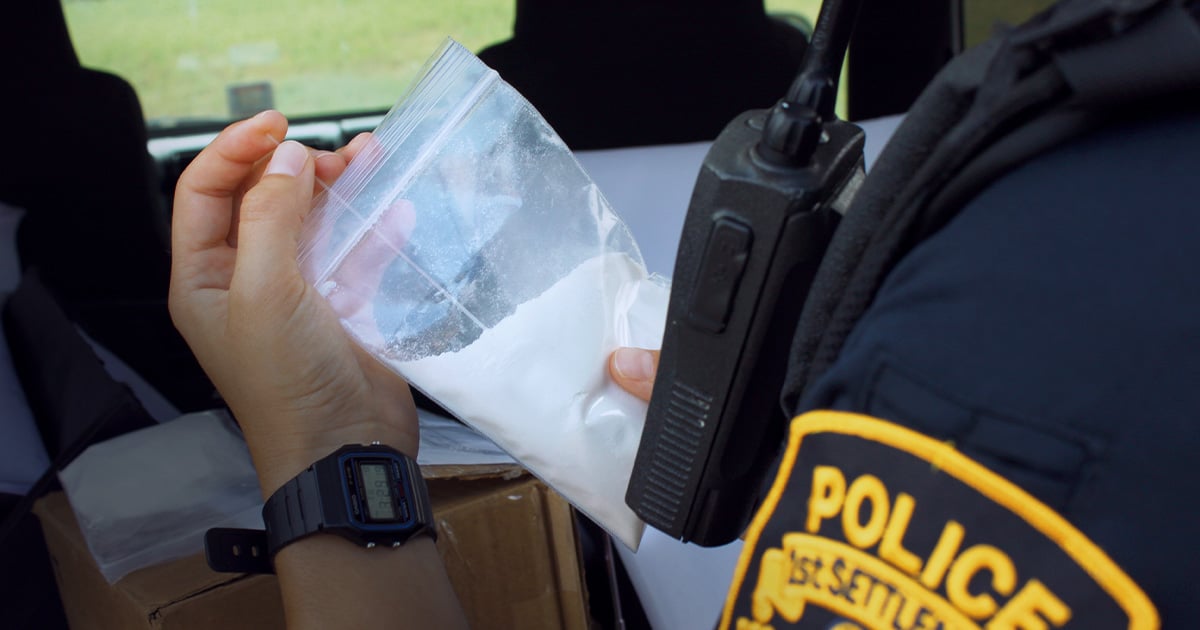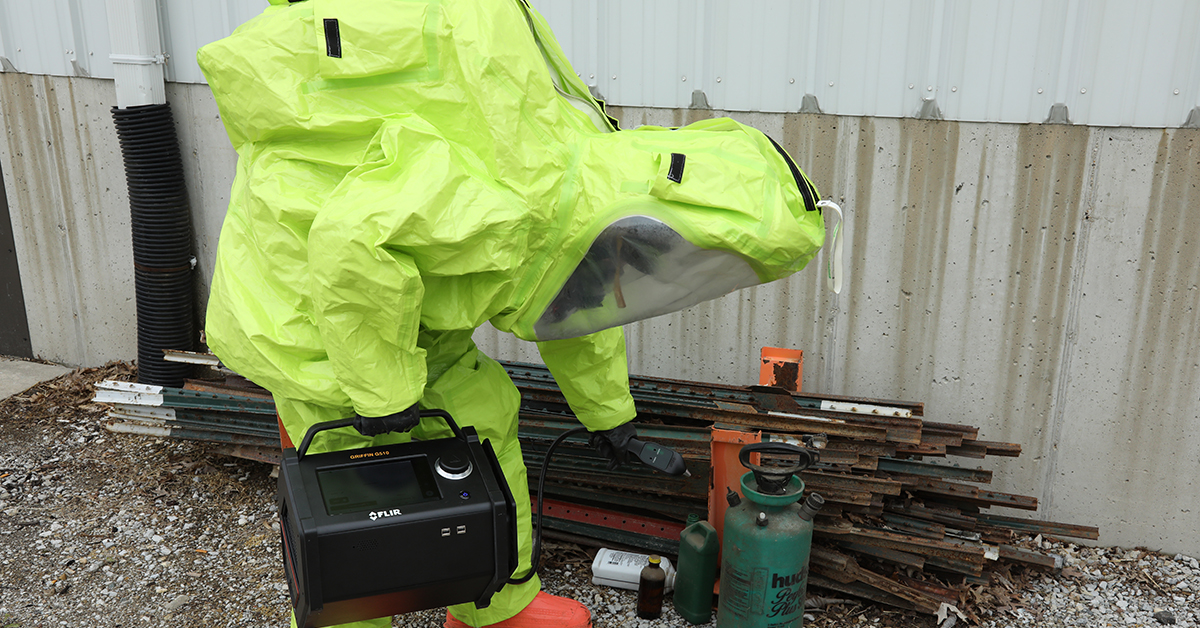Detection of Illicit Drugs In Unknown Solid Samples

Law enforcement and first responder agencies have seen an increase in dangerous synthetic opioids, especially fentanyl and its structural derivatives. Exposure to as little as 2-3 mg, roughly the size of 5-7 grains of salt, can cause serious health effects, such as respiratory distress, and potentially death. Even with use of proper personal protective equipment (PPE) and extensive training, law enforcement officers and first responders are at a high risk for accidental exposure every time they execute search and seizures, provide emergency medical care, and process evidence collected at crime scenes. Quick accurate identification of potentially lethal unknown substances is crucial to responder and public safety. The FLIR Griffin G510™ portable gas chromatograph mass spectrometer (GC-MS) offers on-scene responders the ability to quickly identify unknown powders that present potential health risks.
GC-MS
GC-MS is a gold-standard technology used both inside and outside of labs to analyze complex samples, including vapor, liquid, and solid-phase chemicals. GC-MS is selective and sensitive and offers the broadest capability – making it the ultimate confirmatory tool. Results can be produced in just a few minutes, expediting decision-making at the point of sample collection.
Engineered to be portable with robust, real-time precision, FLIR’s Griffin G510 can be utilized in situations where quick initial assessment of air and liquid samples is required (Figure 1). Integration of the G510 with FLIR’s PSI-Probe™ (Prepless Sample Introduction Probe), expands the analytical capability to include identification of bulk unknowns, such as solid residue or powders (Figure 2). The PSI-Probe utilizes a simple Touch-and-Go (TAG) technology that eliminates the need for pipettes, solvents, or reactive agents (Figure 3). Samples are collected, placed in the probe, and then the probe is inserted into the built-in injector (Figure 4) on the Griffin G510. Pressing “Start” on the GSS Touch™ screen display initiates the analysis (Figure 1). Once completed, the results are compared to an extensive on-board chemical library and an alarm will sound if a potential threat has been identified.

Figure 1: FLIR Griffin G510 Portable GC-MS.
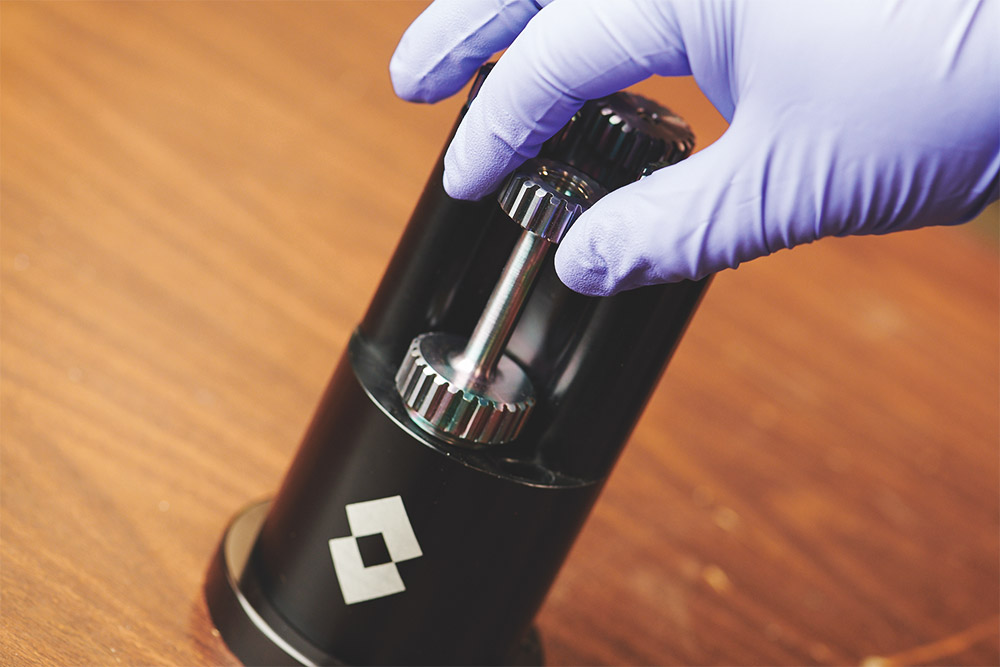
Figure 2: FLIR Prepless Sample Introduction Probe.

Figure 3: Touch-and-Go (TAG) Sample Collection.

Figure 4: Sample Introduction via PSI-Probe on Griffin G510.
This application note demonstrates the use of a PSI-Probe to collect and introduce an unknown powder to the Griffin G510 for analysis and chemical identification.
DETECTION METHODS AND RESULTS
A sample of an unknown powder was collected using the TAG process:
- Using the touch screen display, select the pre-installed method for PSI-Probe and allow the G510 to come to readiness while completing steps 2-4.
- Using the pre-scored end of the 4” glass capillary, touch or tap the surface containing the powder.
- Place the end containing the sample into the PSI-Probe micro-vial and snap off the top of the microcapillary. Discard the remainder.
- Place the micro-vial into the PSI-Probe using the supplied tweezers.
- When the display indicates it is ready for the sample, insert the PSI-Probe into the injector and press Start on the touch screen.
In less than ten minutes, the Griffin G510 identified the presence of fentanyl in the unknown powder and alerted the operator of the potential threat. In addition, as seen in Figure 5, the presence of caffeine, a commonly used cutting agent for opioids, was also detected. Figure 6 demonstrates the ability of the Griffin G510 to positively confirm the identity of an unknown powder by automatically matching the results against known spectra in the on-board library. The Griffin G510 is delivered standard with the NIST/EPA/NIH Mass Spectral Library, SWGDRUG Mass Spectral Library, and GriffinLib Mass Spectral Library. As new drugs emerge, users can add them to their library.
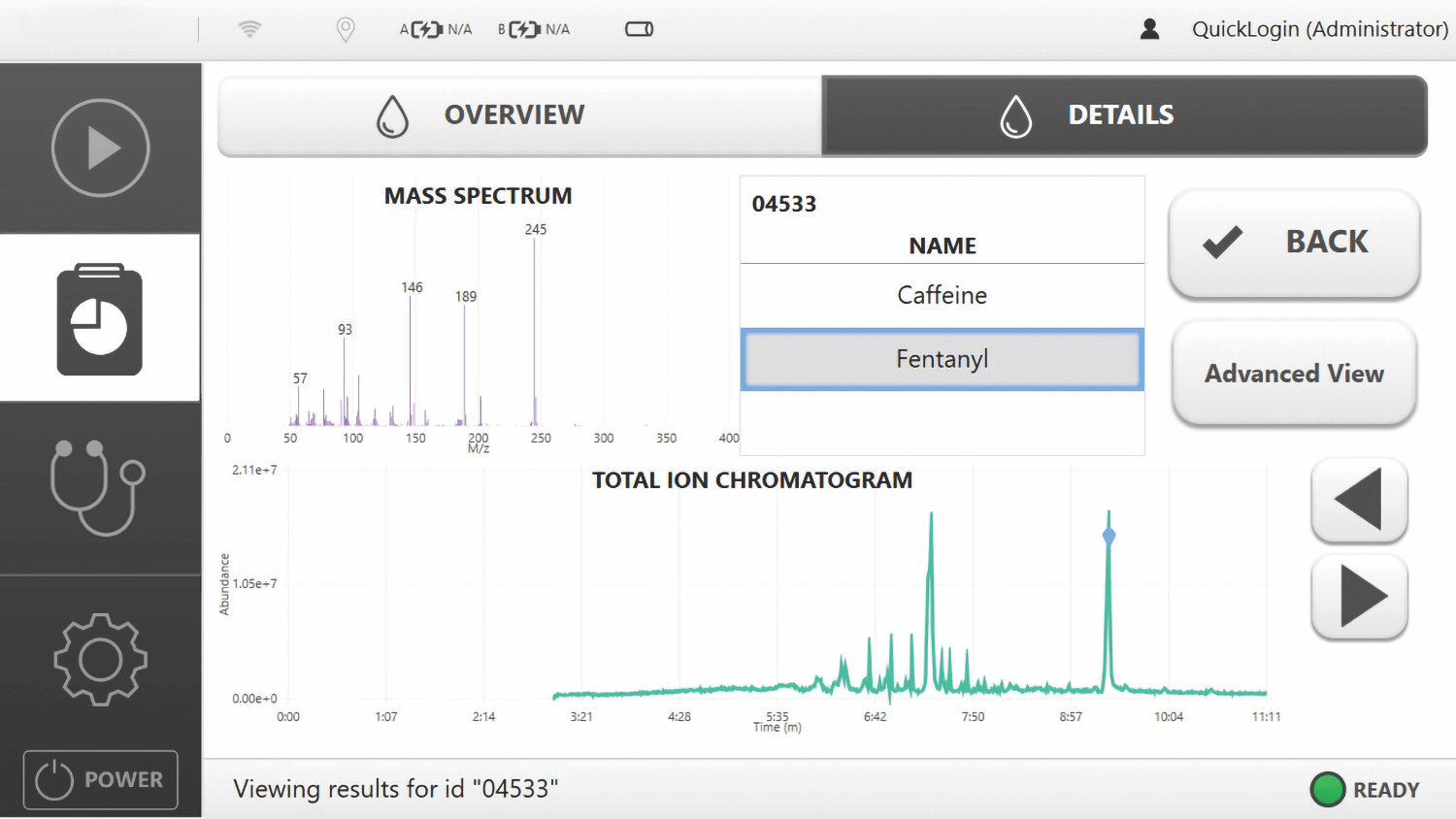
Figure 5: GSS Touch results of the analysis of an unknown powder, identifying the presence of Fentanyl and Caffeine.
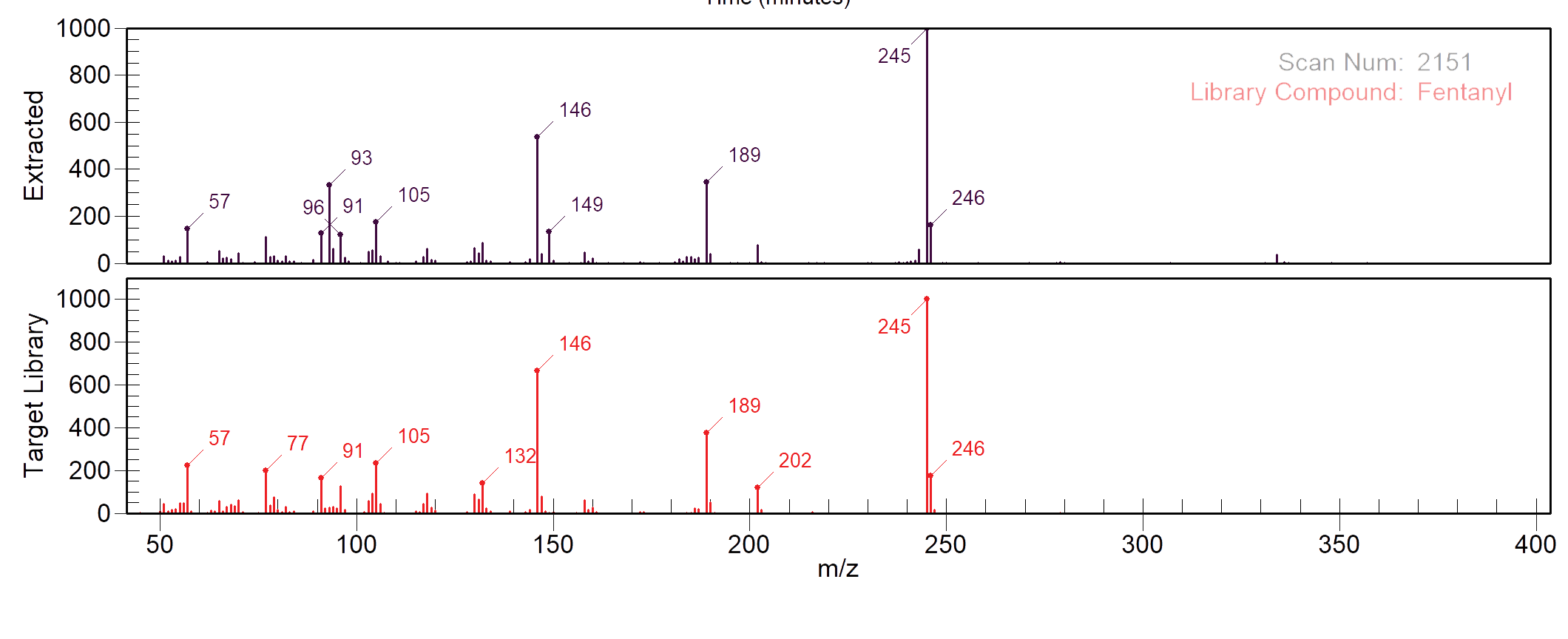
Figure 6: GriffinLib mass spectral library match for Fentanyl.
CONCLUSION
The growing occurrence and potency of illicit synthetic opioids has resulted in an increase in overdoses and overdose-related mortalities. The threat to the public, especially those in law enforcement and first response, continues to escalate and the need for thorough, expeditious, and accurate assessment is crucial. The precise and portable Griffin G510, used in combination with the PSI-Probe™, provides quick identification of potential threats at the point of collection and reduces the possibility of accidental exposure for responders.
For more information, please visit www.flir.com/g510
